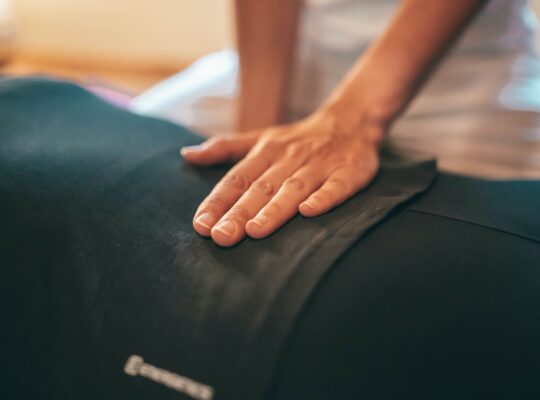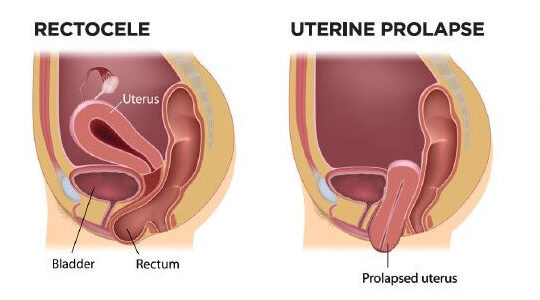The Pelvic Floor And Bowel Function
The pelvic floor is comprised of three layers of muscles that line the pelvic bowl, controlling sexual, urinary, and bowel function. They play an important role in your core strength and stability as well, working with the deep muscles of your abdomen, low back, and the diaphragm (respiration). At baseline, the pelvic floor muscles are always working to support our pelvic organs, such as our bladder and rectum. This helps to maintain urinary and fecal continence. They also relax to allow urine and stool to pass.
Under normal conditions during a bowel movement, the muscles that respond to pressure and stretch and close/ relax the anus (internal and external anal sphincters) work automatically to push out stool. The pelvic floor relaxes and the deep abdominals muscles contract to aid in emptying the bowels. Disruption to the pelvic floor muscles or to your GI system can lead to bloating, increased abdominal discomfort, fecal incontinence, straining with defecation, and pain with bowel movements. Dietary factors, the gut microbiodome health, pelvic floor musculature, and bowel habits must also be analyzed to get the whole picture.
Who Can Develop Fecal Incontinence?
Fecal incontinence is the involuntary loss of stool and can sometimes occur after a vaginal delivery with perineal tearing. Third and fourth degree tears, especially if extending to the anus, can lead to damage and scarring of skin and pelvic floor musculature and affect function, leading to urinary and fecal incontinence. Risk factors include giving birth to a large baby, the use of forceps or a vacuum to help deliver the baby, and an episiotomy. Individuals who have had hemorrhoids removed or surgery and radiation treatment for colorectal and prostate cancer are also at risk to developing fecal incontinence. Depending on the extent of the damage to the anus and rectum, they may not feel an urge to have a bowel movement and can have poor to no control over their pelvic floor muscles. Aging is another factor, as tissues tend to thin out and pelvic floor muscles weaken as we get older. Those with fecal incontinence can present with fecal soiling on their undergarments or complete loss of stool, necessitating use of incontinence pads or underwear.
What Leads To Constipation?
On the other end of the spectrum, constipation is the inability to or difficulty having a bowel movement. It is defined as having fewer than three bowel movements a week. Some causes of constipation are poor diet, decreased water intake, side effects of medication or iron supplements, or tight pelvic floor muscles. Medications that contribute to constipation include oral contraceptives, opioids, NSAIDs, antihistamines, and antidepressants. A constant state of dehydration will lead to firmer stools and make it more difficult to push stool out. Constant straining due to chronic constipation can lead to bowel dysfunction, such as decreased sensitivity and feeling of urge to defecate over time, due to the overdistension of the bowel wall and making it harder for the muscles to contract. Pregnant and postpartum women can also experience constipation, as a result of decreased motility of the stomach and colon and and weakened abdominal muscles.
Treatment with Pelvic Floor Physical Therapy
Pelvic floor physical therapy can help by assessing the integrity and strength of your pelvic floor musculature and directing treatment to improve elasticity and function of specific muscles. Damage and scarring to the perineum or pelvis cause the pelvic floor muscles and skin to lose their elasticity and weaken, therefore affecting their ability to properly work. Internal manual treatment to stretch tight pelvic floor muscles and scar tissue can help restore their function. Biofeedback treatment utilizing internal vaginal or rectal sensors can also assist in effectively engaging and relaxing the pelvic floor muscles. This may be done using manual cues by the physical therapist or a small electronic device that gives feedback to how well you’re able to contract and relax your muscles. Another tool commonly used in training for bowel dysfunction is a small balloon catheter. It is inserted into the rectum and inflated to improve rectal sensation and sphincter contraction and relaxation. The balloon training simulates pressure in the rectum to facilitate urge, allows for pelvic floor strengthening by contracting the muscles around the balloon, and teaches proper defecation techniques and pelvic floor relaxation by pushing the balloon out.
In addition to these internal treatment techniques and pelvic floor exercises, the overall physical therapy program will include a home program, address nutrition and diet, such as by filling out and analyzing a bowel or food diary to identify certain triggers of gastrointestinal conditions and constipation and the effect of stool softeners or fiber in your diet, and review good toileting techniques. This comprehensive approach in pelvic floor therapy will ensure better success and long term relief.
Reach me if I can answer any questions on physical therapy, serving you locally in New York City or anywhere online virtually through “telehealth“.
Sign up for Pelvic Health and Wellness Tips






